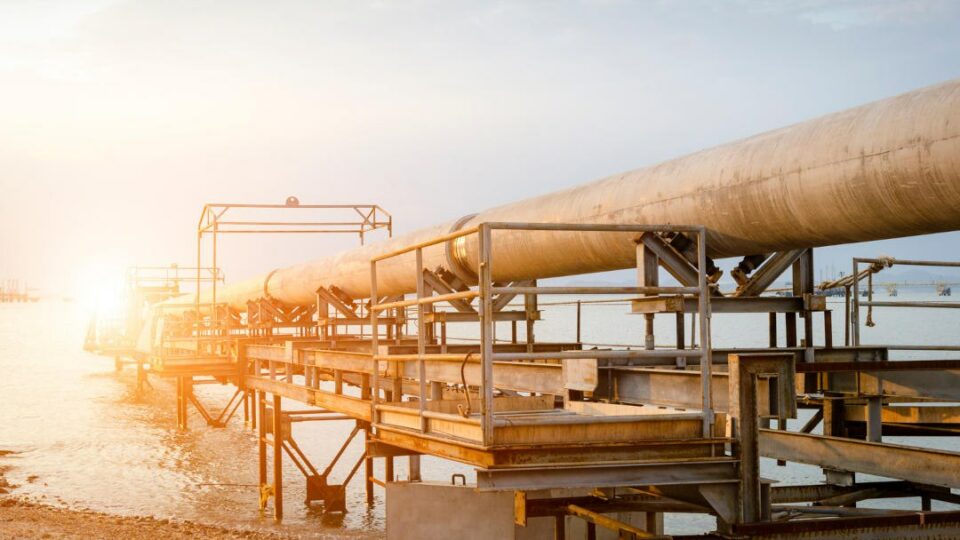Organizations from all over Europe unite their voice against H2Med: “It is an unnecessary infrastructure that will not solve the energy crisis”.
This Wednesday, October 25th, a High Level Decision-Making Meeting will take place, bringing together senior officials from the European Commission and the governments of the 27 EU countries to discuss the projects to be included in the sixth list of Projects of Common Interest/Projects of Mutual Interest (PCI/PMI). Dozens of environmental and civil society organizations from all over Europe as well as members of the European Parliament and political parties have come together to express their concerns about the likely inclusion of H2Med, an infrastructure that aims to be the largest green hydrogen corridor between the Iberian Peninsula and Central Europe, as well as other unnecessary and oversized hydrogen transport infrastructures.
In the current context of the energy and climate crisis, there is a tendency to consider green hydrogen as one of the most viable options for the decarbonisation of the economy. “This has led to a frantic race to develop numerous projects, some of which risk not being necessary in the future because they are oversized and do not respond to the needs of the energy transition, such as H2Med,” the signatories say in a letter which has been sent to the participants of the High Level Decision-Making Meeting, asking them to oppose this type of projects.
H2Med includes two cross-border interconnections that would make it possible to transport hydrogen from the Iberian Peninsula to France. The first would connect Spain and Portugal via land (H2Med-CelZa project), while the second would be an underwater interconnection between Spain and France (H2Med-BarMar project). The current production levels of green hydrogen and the uncertainty about its future production and demand do not justify the construction of this project. “Green hydrogen is still at a very early stage of development. It is an immature technology in terms of large-scale production, transport and storage. For it to make a real and significant contribution to the EU climate goals, major breakthroughs in terms of technology and efficiency are needed,” the signatories explain.
If H2Med and the other hydrogen transport projects are considered PCIs, they could have priority and strategic project status, and would qualify for certain benefits to speed up their implementation, such as EU funding, better regulatory conditions or faster permitting processes, which would ease the environmental requirements with which such projects must comply.
Signatories’ concerns have been compounded by the news that the Agency for the Cooperation of Energy Regulators (ACER), the EU body that advises European institutions on various energy-related issues, has included H2Med in its list of projects suggested for PCI consideration.
Due to the difficulties associated with long-distance hydrogen transport from an economic, technical and energy efficiency perspective it is key to prioritise the local production and consumption of green hydrogen. The signatories indicate that the use of green hydrogen should be prioritised in industrial sectors that are difficult to decarbonise (steel sector) and in sectors that are impossible to electrify, such as maritime transport or aviation, but demand must also be reduced. “In addition, in case of blending – mixing fossil gas with hydrogen – green hydrogen could be used as an excuse to continue relying on fossil gas, which is unacceptable because of its serious repercussions on people and the climate,” the letter argues.
In addition, the massive unnecessary deployment of renewable energies needed for large-scale green hydrogen production may have adverse impacts on the environment and biodiversity, thus facing low social acceptance due to the lack of prior dialogue with affected communities. It may also have very negative impacts on the climate due to its increased risk of leakage into the atmosphere.
In summary, the signatories call for the exclusion of H2Med from the sixth list of PCIs because:
- The promoters have not carried out a detailed preliminary study on the prospects for future production and demand for green hydrogen.
- In the case of H2Med-BarMar there is no information on its technical and economic feasibility. The project belongs to a category for which there are no guidelines on its design to ensure the efficiency and safety of the infrastructure.
- The construction of H2Med would imply the construction of a network of new infrastructures for hydrogen transport over medium and long distances which, to date, has not proven to be necessary.
- Hydrogen transport projects such as H2Med would involve adapting existing pipelines. However, the technologies to adapt fossil pipelines for hydrogen transport are not currently developed on a large scale, nor are they as easy to apply as industry suggests. Indeed, the physico-chemical properties of hydrogen imply a higher risk of leakage, with consequent severe climate impacts (hydrogen is an indirect greenhouse gas).
- If H2Med is included in the list of PCIs, it could be subject to less stringent environmental controls and exempted from comprehensive environmental impact assessments. The latter is particularly relevant given that H2Med-BarMar will cross the Gulf of Lion, one of the most biodiverse ecosystems in the Mediterranean.
- The public funding that this project would receive would be to the detriment of other measures whose effectiveness has already been demonstrated, such as the commitment to renewable projects with citizen participation, self-consumption, energy communities and/or improvements in household energy efficiency.
